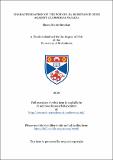Characterisation of the potato H2 resistance gene against Globodera pallida
Abstract
Multiple pathotypes of the potato cyst nematode Globodera pallida are present in British potato fields; however, no single resistance gene has been identified which confers resistance to all three pathotypes which are present in British fields (Pa1, Pa2/3). Fortunately, the H2 resistance gene has been identified from the wild potato diploid S. multidissectum which confers a high level of resistance to Pa1, and a lower level of resistance to Pa2/3.
A segregating F1 population was generated using susceptible cultivar Picasso and resistant breeding line P55/7 and using an initial population of 154 progeny clones the H2 gene was verified to be a simplex dominant resistance gene. Bulked segregant analysis was undertaken with GenSeq and RenSeq enrichment to identify informative SNPs. Allele specific markers based on these informative SNPs were used to map the H2 gene to a 4.7Mb region of potato chromosome 5, using the dihaploid DM genome as a reference. Using an expanded F1 population of 656 clones in combination with designed markers allowed the region of interest to be narrowed to 0.8Mb at the distal end of chromosome 5. Analysis of this region identified two NB-LRR structure resistance genes which became putative candidates of the H2 gene.
Gene enrichment was also undertaken in pathotype Pa1 of G. pallida in order to identify putative candidate effectors which initiate resistance gene mediated cell death. A comparative analysis between virulent Pa2/3 and avirulent Pa1 revealed 19,873 allelic differences, which were stringently filtered to 23 variants in 10 candidate genes. One candidate gene was cloned and functionally tested via vacuum infiltration in resistant P55/7 potato leaves to observe a potential hypersensitive response. The data from the presented work will aid future research into cloning the functional H2 gene.
Type
Thesis, PhD Doctor of Philosophy
Collections
Items in the St Andrews Research Repository are protected by copyright, with all rights reserved, unless otherwise indicated.

